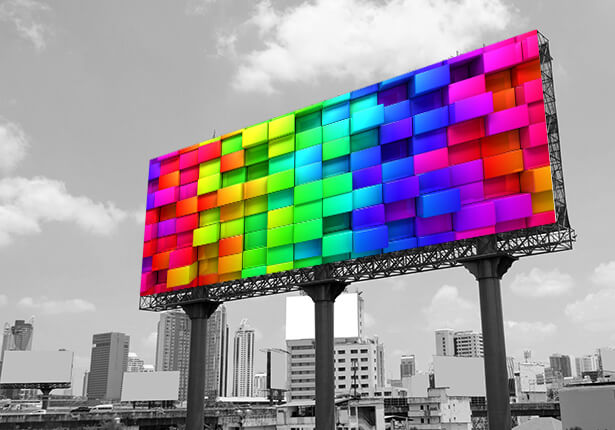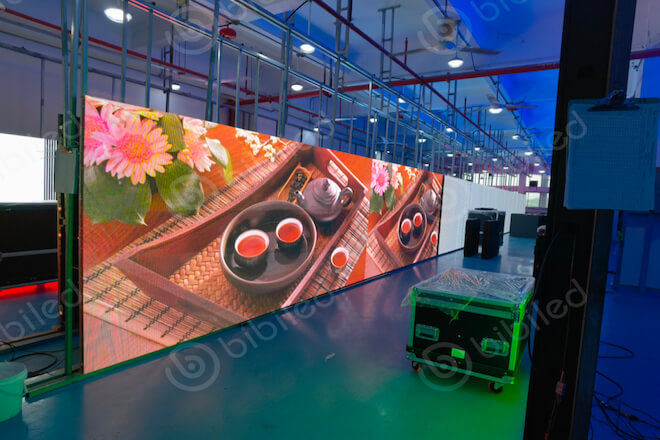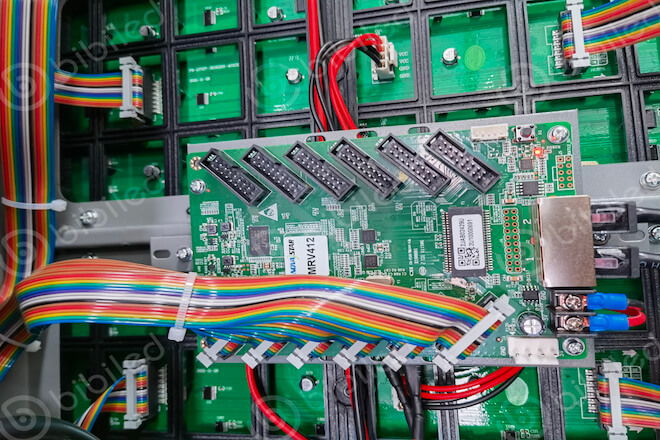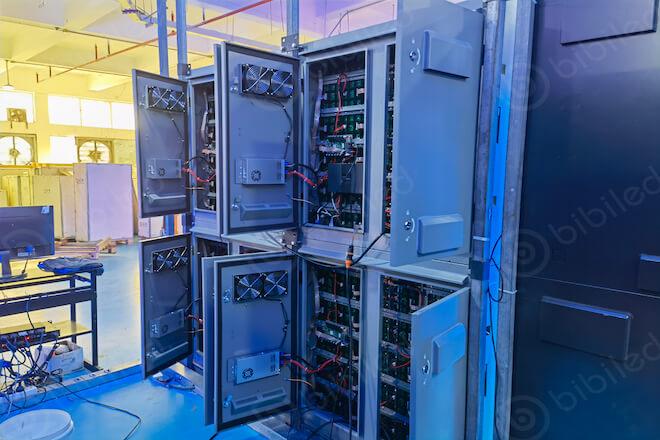Introduction

Inferior LED display screens need to spend a lot of time for maintenance, and in serious cases, safety accidents will occur, such as LED display screens suddenly falling, LED display screens catching fire, and so on.
Therefore, a good-quality LED display not only has a good display effect but also is stable and has a high safety index.
So, how to check the quality of your outdoor LED display screen? What are the quality requirements for LED displays? We will show you in detail how to distinguish the quality of the LED display from the four aspects of viewing quality, manufacturing process level, energy consumption, and environmental resistance.
1. Viewing quality

First, from the uniformity and clarity of viewing display effect, it can be checked and observed from 10 aspects.
1) Brightness and viewing angle
The brightness ensures a clear display even under strong light, and the viewing angle is the maximum viewing angle for the viewer to see the content.
How to judge the brightness of large LED displays?
The value of the brightness of the outdoor LED display:
- Monochrome LED display: 1200CD/square
- Two-color LED display: 3000CD/square
- Full-color LED large display: 5000~8000CD/square
How to check the brightness value of the outdoor LED display?
You can use a test instrument specially designed to test brightness, adjust it to monochrome when the color correction of the LED display is correct, change it to the brightest state, and test to get the value.
The best viewing angle of an outdoor LED display is between 120 and 160 degrees. This only needs to be viewed at different angles and distances as long as the displayed content can be seen clearly.
2) White balance and wavelength determine whether the color is pure and consistent
Any deviation from the actual ratio will cause a deviation in the white balance. The display system needs to adjust the white balance if you see white on the LED screen but other blue or yellow-green, not pure white.
3) Color reproduction degree
Color reproduction is the goal of visual display. The more it can restore the real scene, the better the quality of the product. Many LED display screen manufacturers are pursuing DHR color to improve the visual experience.
4) No mosaic
You can tell this at a glance.
The main reason for the mosaic is the quality of the led screen plug-in, poor contact, or very bright or dark small squares; the LED module has necrosis and needs to be replaced.
5) No dead point
Use the single colors (red, green, blue, and white) to test separately and observe that the color is consistent.
If there is an abnormally bright spot or dark spot, it is a dead spot; mark it well, and replace the lamp bead.
6) No color block
The reason is that the LED screen is clear and has no large color block.
The color block is the obvious color difference between adjacent modules, which the poor control system, low gray scale, and low scanning frequency may cause.
When the video displayed on display is very different from the color of the video source, this has a lot to do with the color temperature, so the white balance color temperature of the outdoor LED display is adjusted to be between 6500K and 8000K.
8) Contrast
Contrast is the measurement of the difference in brightness levels between the brightest white and the darkest black in an image’s light and dark areas.
The greater the difference range, the greater the contrast.
Generally speaking, the higher the contrast, the clearer and more eye-catching the image, and the more vivid the color.
If the whole picture of the LED display screen you see is grayish or even a little unclear, you need to adjust the contrast.
If the adjustment is still the same, then consider quality issues.
9) Flatness
The surface flatness of the display screen should be within ±1mm, which the naked eye can judge, and the led display screen with obvious protrusions or depressions will directly affect the display effect.
10) Refresh rate
The refresh rate refers to the number of times the display information of the LED display is completely displayed per second, unit: Hz.
The refresh rate is generally invisible to the naked eye.
You can take out your mobile phone and take a video to understand the situation, and If the video shot by the mobile phone shows black stripes or continuous flickering, the refresh rate is not good.
Therefore, the refresh rate must be at least above 600Hz. Now many central control systems can reach 1920Hz or even 3840Hz.
2. LED display manufacturing process level capability

11) Circuit board
The temperature of the LED display will rise during use. The quality of the circuit board is the conductor inside the circuit board, and If the conductor is too thin, it is easy to fuse during use, resulting in a large area of quality problems.
It is impossible to judge the quality of the driver IC for a while, so it is very important to choose a trustworthy IC brand that can ensure the stability of the product, such as Chipone\Macrobloc.
13) Control card
99% of the LED display screen manufacturers are purchasing control cards.
Generally, relatively stable control card brands are Novastar\Colorlight\linsn\Huidu. If it is another brand, you need to pay attention.
14) Face mask
This can be observed with the naked eye.
If the ink color of the mask is inconsistent, there will be a large color difference, especially when the LED screen is not lit. Therefore, the consistency of the mask’s ink color directly affects the LED display’s effect.
3. What is the energy consumption of the outdoor display screen?

15) Power consumption per square meter
An LED display screen generates the power consumption per square meter on an area of one square meter, and the unit is watts.
The power consumption of the LED display screen usually has two indicators: one is the working power consumption, and the other is the maximum power consumption.
For example, the working power consumption of a square LED display reaches 260 watts, which means that the display consumes 260 watts of electricity per square meter per hour.
So how to identify the maximum power consumption of outdoor LED displays?
Just look at the power meter.
4. Ability to resist the external environment
16) Good outdoor LED displays are waterproof, dustproof, and windproof.
So how to detect it?
You can randomly select one or two LED cabinets and put them in the waterproof test laboratory for testing, or you can directly use the faucet for watering testing.
Because the anti-environmental strength of the LED cabinet has a great relationship with the “three-proof” glue, you can ask or go to the production line in person to see whether the glue is machine or manual. What brand of glue is it?
In conclusion:
As a long-term investment in LED displays screen, it is very important to judge the quality of outdoor LED displays in detail by the above 16 points.
We hope that you can buy a suitable outdoor LED display. If you have questions about the LED display, you can leave a message below or email us, and we will answer you wholeheartedly.
